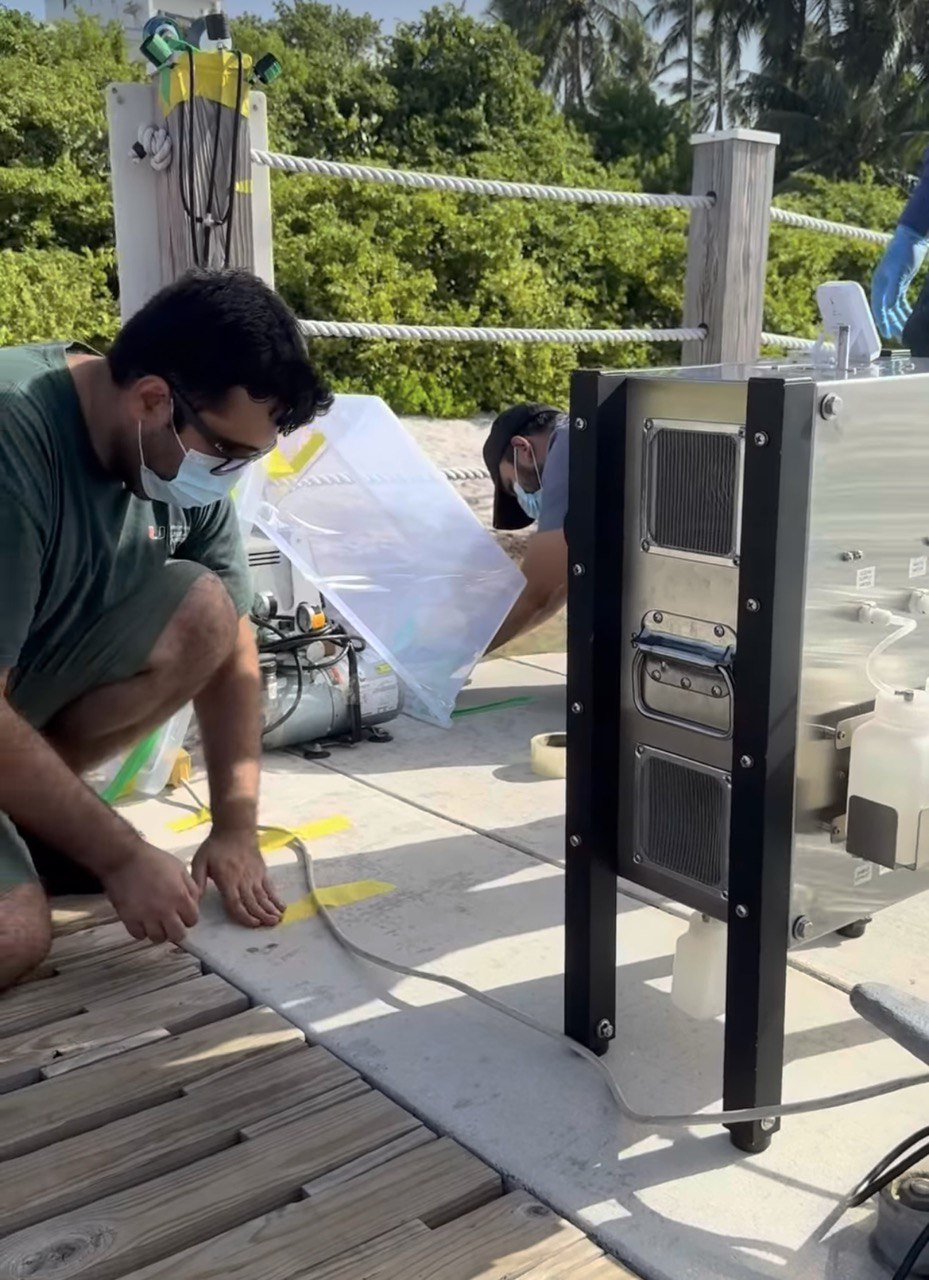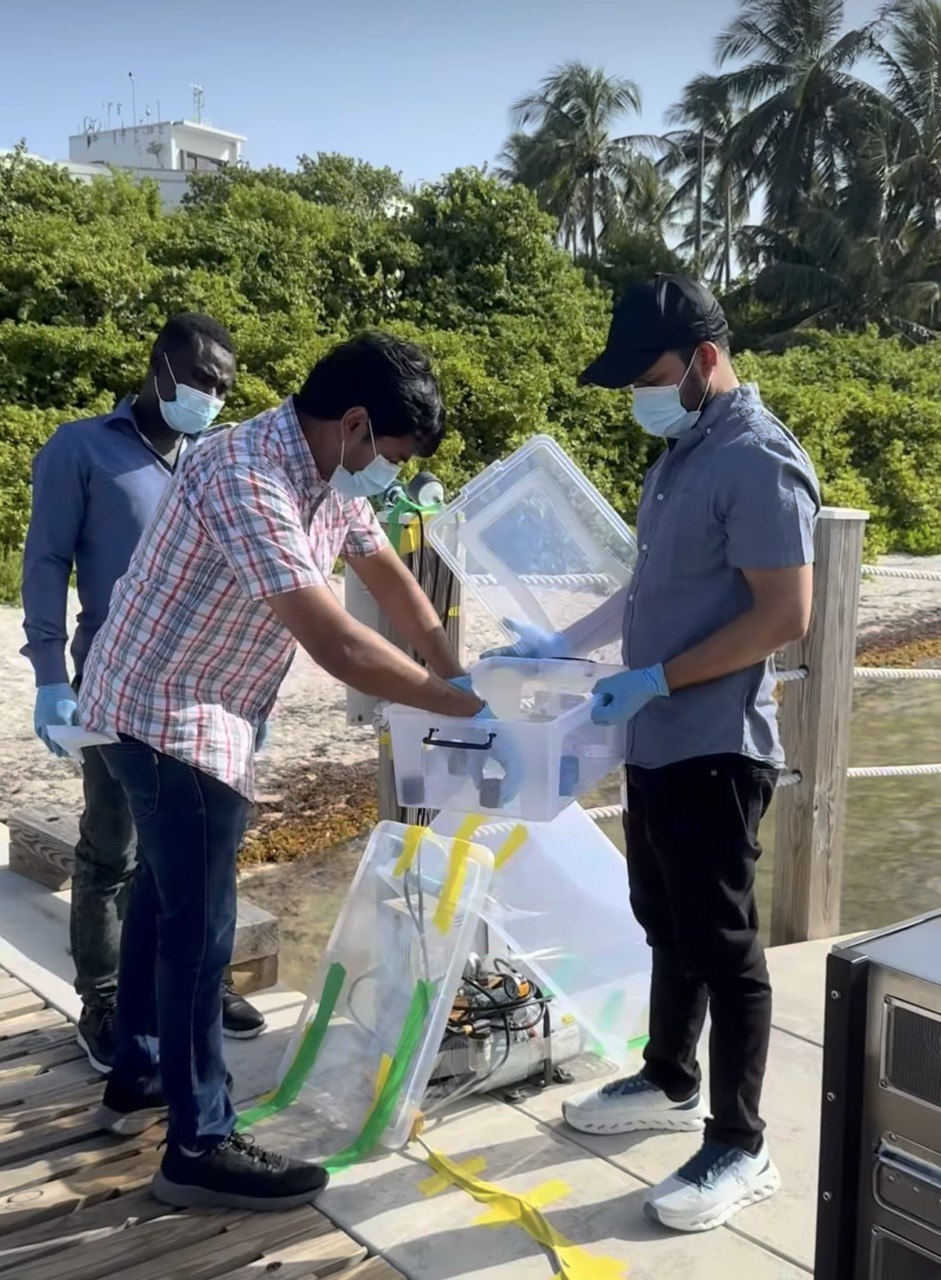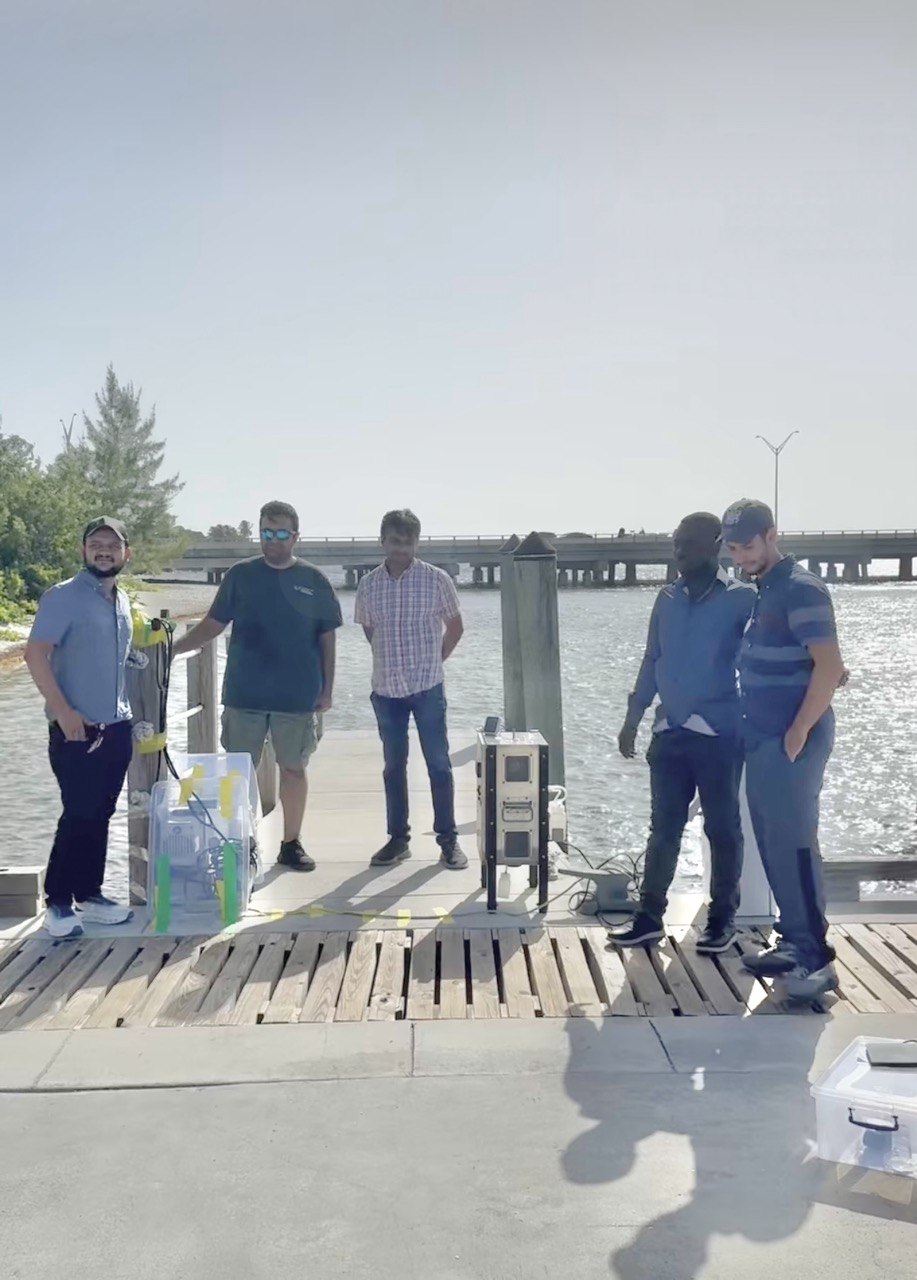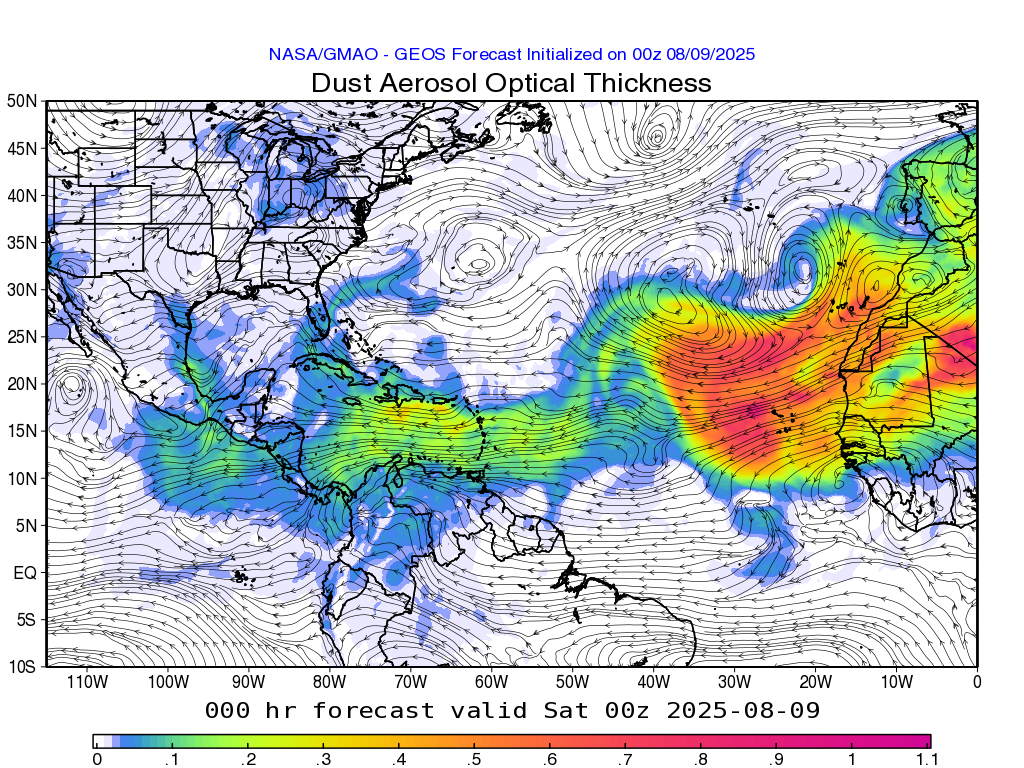Last month, CAST members collaborated with Dr. Prospero and Dr. Cassandra Gaston’s groups from the Rosenstiel School of Marine, Atmospheric, and Earth Science at the University of Miami to conduct a targeted sampling campaign during a major Saharan dust intrusion into South Florida.
The effort began a week earlier, when Dr. Prospero—renowned for his pioneering work on transatlantic dust transport—alerted the team that a significant dust storm was forecast to reach Miami, as shown in the NASA/GEOS Dust Aerosol Optical Thickness forecast above. Recognizing the opportunity, Dr. Gaston coordinated logistics for sampling at the Rosenstiel School of Marine, Atmospheric, and Earth Science (RSMAES) waterfront monitoring station, providing critical site access and operational support. The NASA/GMAO GEOS forecast map (Fig.1) illustrates the transatlantic transport of Saharan dust, highlighting the plume’s progression from West Africa toward the southeastern United States on August 9, 2025.
Fig.1.NASA Global Modeling and Assimilation Office (GMAO), GEOS forecast initialized 00z August 9, 2025.
On the sampling day, CAST deployed state-of-the-art aerosol collection devices, including high-efficiency filter systems and advanced bioaerosol samplers, to capture mineral dust and associated biological particles traveling thousands of miles from the Sahara Desert. The collected samples will be analyzed for particle size distribution, mineral composition, and biological content, and compared to concurrent samples from Barbados to assess changes during transatlantic transport.
This interdisciplinary effort brought together atmospheric chemistry, aerosol science, and field operations expertise, reflecting the collaborative mission of CAST. It also lays the groundwork for improved monitoring and understanding of the climate, health, and ecological impacts of Saharan dust.








